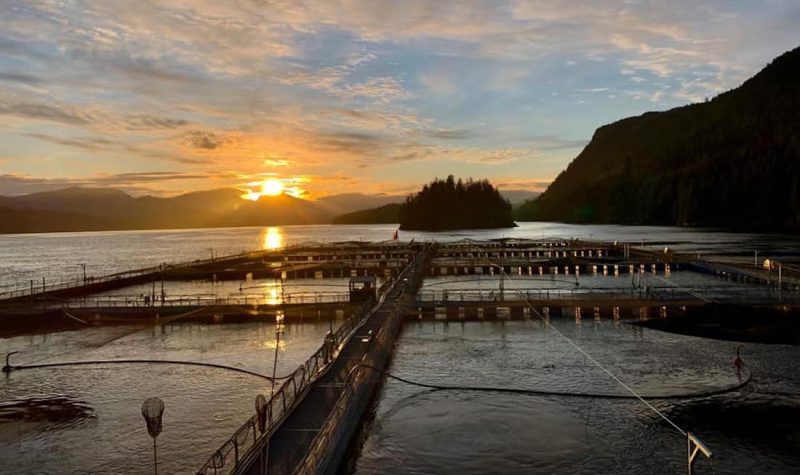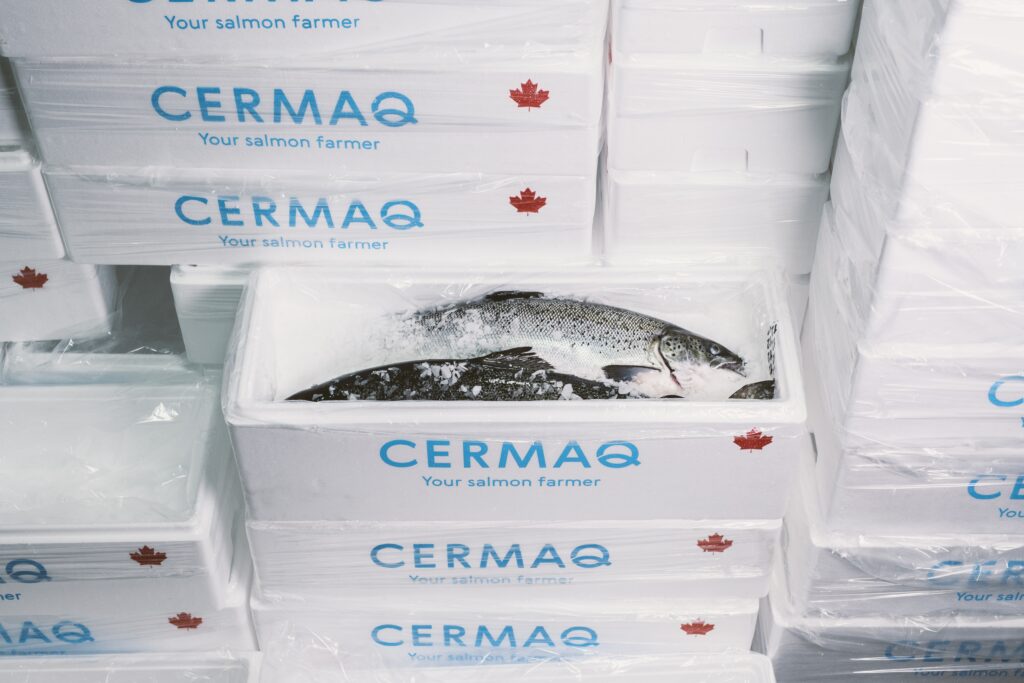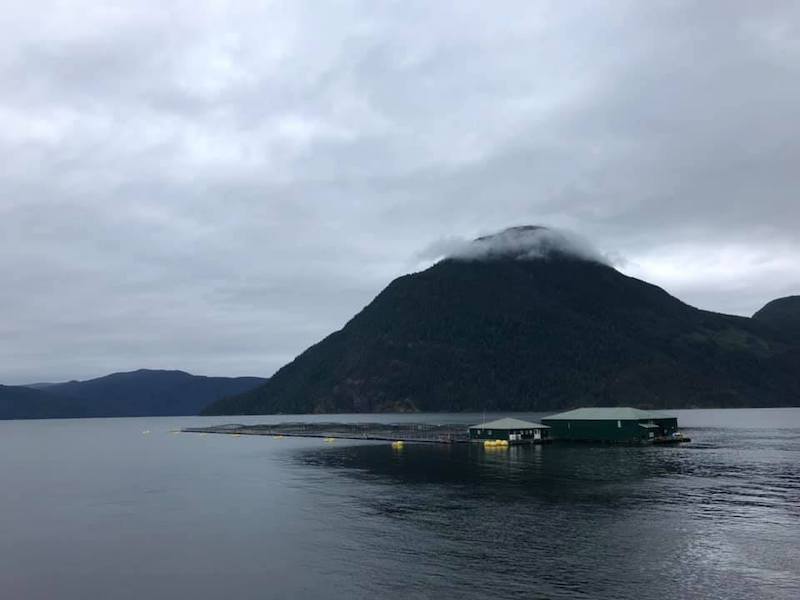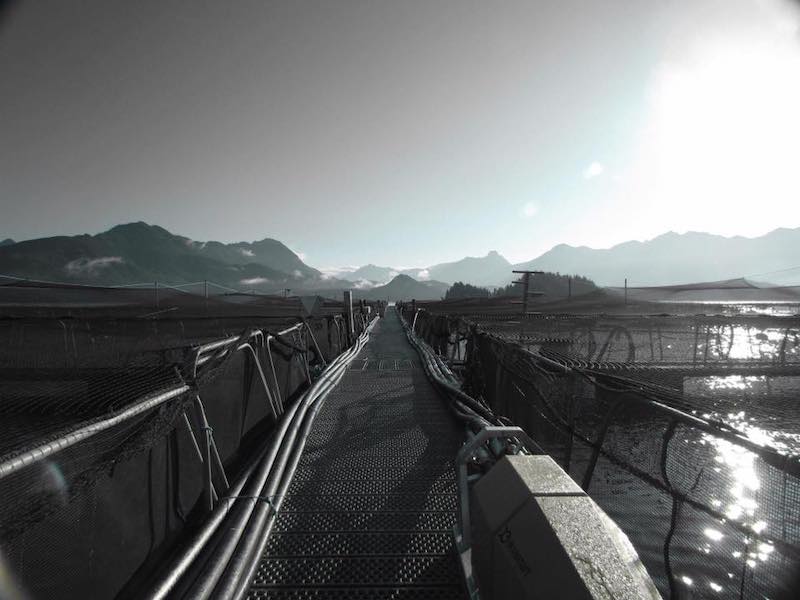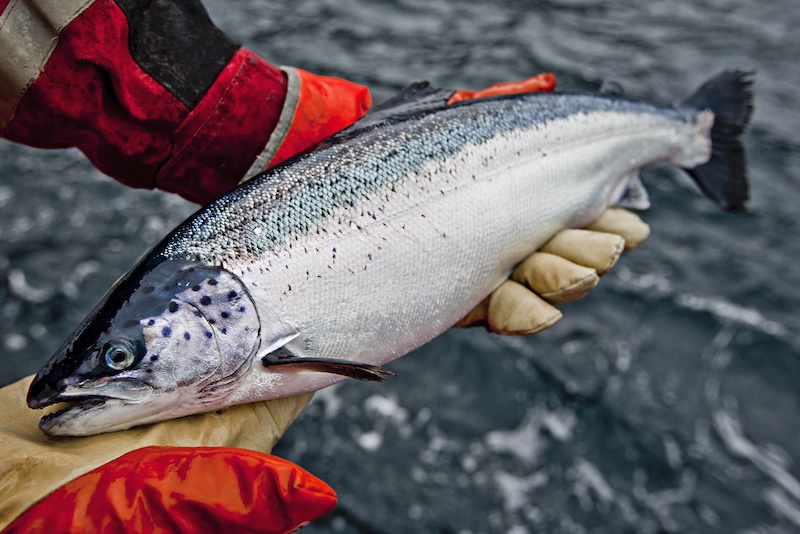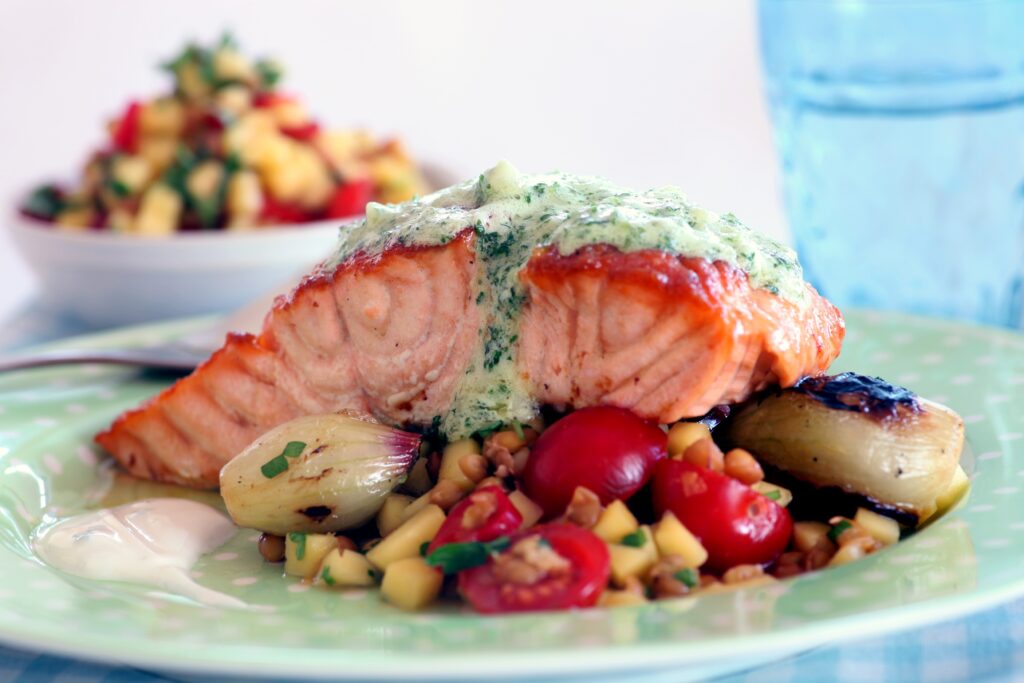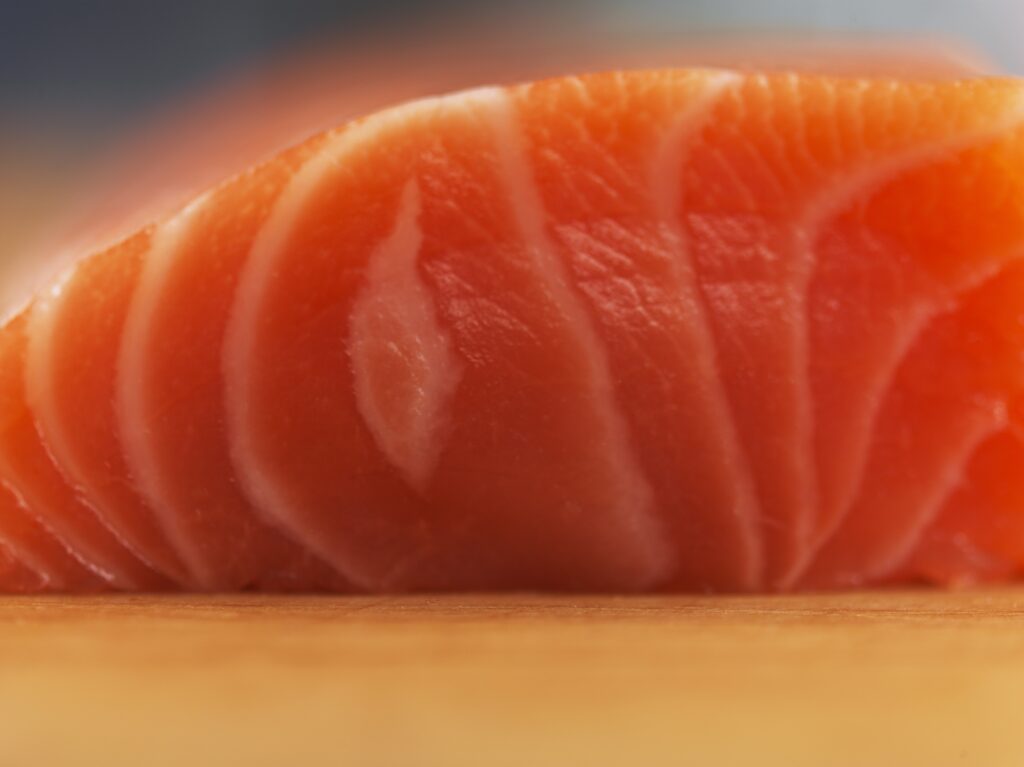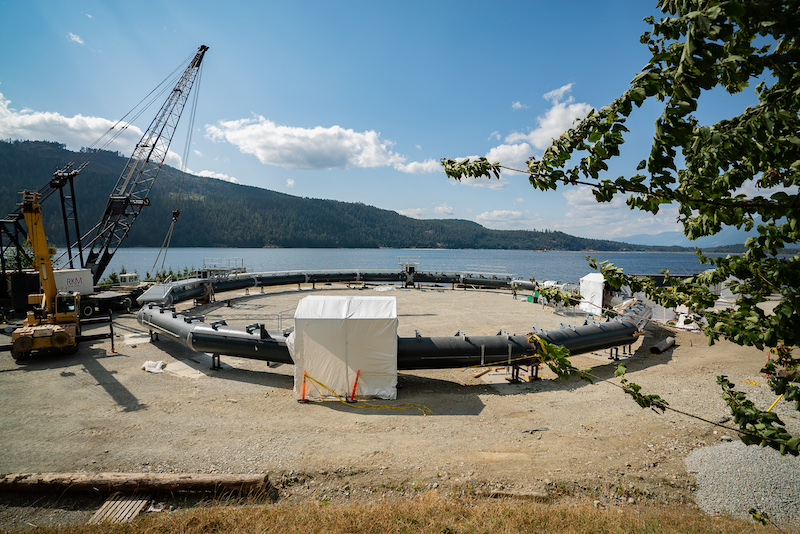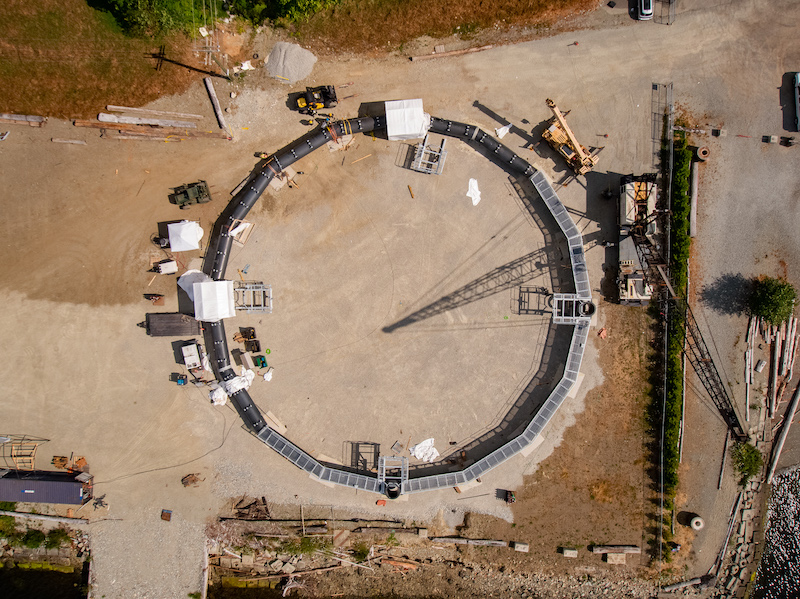By Roy L Hales
A new UBC study suggests that global warming could significantly reduce the extent that salmon can be farmed off the West Coast of British Columbia. The study’s lead author, Muhammed Oyinlola said that up to 84 per cent of the area currently suitable for fish farming could be lost. We need to act now: either move fish farms on land or further out to sea. Cermaq Canada responds to this and some related issues.
Salmon Farming will still be operating
“Not to diminish the seriousness of climate change … which is the biggest issue we’re all facing, we see this kind of report come out every couple of years,” said Linda Sams, Sustainable Development Director of Cermaq Canada. “…Farmers, not just salmon farmers but farmers in general, all need to manage their operations … and be aware and plan for increasingly unstable events and changing environmental conditions. In light of that, I’m confident that aquaculture and likely salmon farming, will still be operating in twenty or thirty years.”
At another point in the interview, Sams added that during the next 10-15 years.
“I don’t see any challenges to the viability of salmon farming on the West Coast, but I do believe all of us need to be mindful to the changes [in our climate] and making sure we are planning to adapt," said Sams.
Ocean Temperatures
The UBC study framed this potential threat in terms of rising ocean temperatures.
A quick google search revealed that water temperatures can vary as much as six degrees at different locations on the coast. In Powell River, for example, during the past twelve months the ocean’s surface water temperatures rose from a low of 6.4°C in February to 13.8°C in August. In Tofino the range was from 6.8°C to 15.1°C. In Campbell River, from 5.8°C to 20.8°C.
Sams suggested that a climate specialist could explain how underwater topography, water movement and storm events influence water temperatures.
She was in Tasmania for 10 of her 33 years as salmon farmer.
“Temperatures of 18°C to 20°C are not unusual for us,” explained Sams.
These are not surface temperatures, like the British Columbian examples cited above, but rather three metres down where the fish are more often found.
“We had to organize our operations, so that we could work through those temperatures,” said Sams.
A Resilient Species
"Salmon are a very resilient species. They have quite a plastic genome, meaning … through their ancestry and evolution they have a wide range of adaption ability," Sams said. "They can adapt to a lot of changing conditions. If you are working in an environment you understand, and have a natural breeding program – which we do – you can plan for the long term and select individuals that are going to thrive in changing conditions.”
Sams reiterated the fact that in Australia, she has observed salmon in warm water conditions.
What temperatures do salmon prefer?
“In the literature you’ll see anywhere from 2°C to 14°C – 15°C, but obviously they can thrive [in water temperatures] up to 20°C, depending on their circumstances,” said Sams. “ … I wouldn’t say there is one specific range that is perfect.”
Question: A DFO study states, “Adult Atlantic salmon prefer water temperatures in the range of 14 to 20°C.”
“That’s probably for optimal growth," Sams responded. "They can survive and live in much lower temperatures.”
Salmon Die Offs
Question: There have been a number of salmon die offs because of warm water in rivers and creeks, does this also occur in the ocean?
“I haven’t heard of a wild fish incident, though we are seeing changing conditions in the oceans, “ said Sams. “We are seeing changes at a faster rate on the West coast of Vancouver Island than other places where we farm. It’s more related to what else is in the water, versus the water temperature itself. We’re seeing increased pressure from plankton blooms across the whole West Coast and also increased impacts from jellyfish. [These are] challenges we haven’t had before … The key to a lot of those challenges … is how we respond and how we mitigate against these changing conditions.”
Is Canada phasing out open net pen farming?
Question: What about the Canadian government’s intention to phase out open net salmon farms?
[The Liberal party] “ … made a platform policy announcement, in the last election, around a responsible transition plan by 2025. To be really frank. we’ve yet to have any kind of material consultation with DFO on what that looks like,” said Sams.
“We also listen to what the Minister [Bernadette Jordan] says on the subject," she added. "She said there will be a responsible plan in place by 2025. I think anything that says ‘responsible’ and a ‘plan’ is a good thing. So we’ll look at that, but we haven’t had a clear mandate to be fully on land by 2025. I think there are organizations and sectors that would like that to be mandated, but it hasn’t been clearly stated like that. So we’ll wait and see.”
Cermaq’s Semi-Closed Containment System
Cermaq has been working on a semi-closed containment system, which “does allow us a little more control of the water quality within the system itself. It is also a separation between us and wild salmon, which reduces risk there. Primarily it will help us … reduce sea lice and plankton interactions.”
While this system is new to British Columbia, Cermaq is in its second production cycle in Norway.
“That’s a really good example of innovation. We can find ways to still farm in the ocean in a way that is sustainable for us as farmers and as a business,” said Sams.
Overhead view of the Semi-closed containment system during construction – courtesy Cermaq Canada
Cermaq Canada responds to Climate Change
“We believe Climate Change is the biggest challenge facing the world right now and we want to be leaders and part of the solution around that," Sams said. "Reports like this come out and remind us that how we grow our food and look after ourselves as a country, specifically, but also as a whole planet: we all need to be stepping up and shouldering the responsibility. Not only how are we going to protect ourselves – What are we doing to slow down climate change?”
“As a company, we are looking at all of our greenhouse gas emissions right now," she added. "I have a person dedicated to it on staff, who is tracking that. We are looking at the science based targets on being a signatory to that and how we can really reduce our emissions.”


